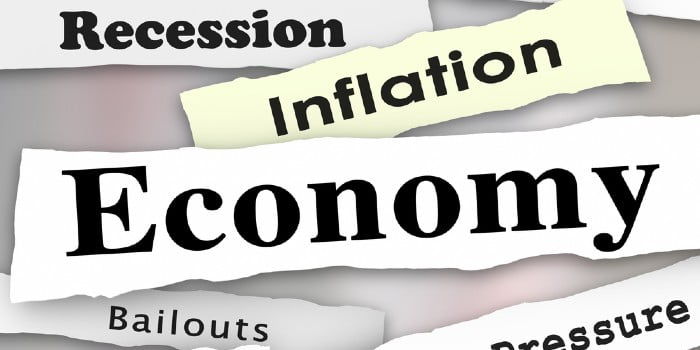In the UK, National Insurance Contribution (NIC) is a tax deduction taken from earnings to fund important systems like sick pay, parental leave, state pensions and of course, the NHS.
Before 1975, everyone paid a flat rate of National Insurance. Now, it’s a bit more of a complex equation based on how much you earn and what kind of work you do.
For employed people who are paid through PAYE, National Insurance isn’t a worry because it is automatically calculated and removed from your wages. Reading your paycheck each month might have stung, but the stress of working out what you owe is gone.
However, If you’re self-employed, you don’t pay yourself through PAYE. This means that it’s your responsibility to calculate and settle the right amount for your contribution.
But before you get overwhelmed by maths and taxes (the horror!), we’ll make this process as easy as possible with our ultimate guide for NIC for the self-employed. Plus, we’ll also cover the Autumn Statement 2023 and what changes this brings to NIC for 2024.
What national insurance am I liable to pay?
Everyone in the UK must pay National Insurance contributions on their earnings from the age of 16 right up until they retire – unless they hit certain exemption requirements.
For example, those earning below the primary threshold (£242 a week for the 2023/2024 tax year) don’t have to pay National Insurance. There are also some situations where you might pay reduced rates, such as married women and widows who opted into the Reduced Rate Scheme before April 1977.
Previously, if you were self-employed, and you earned more than the primary threshold (i.e. £242 a week in 2023) you were liable to pay both Class 2 and Class 4 National Insurance contributions. However, as of April 2024, self-employed people are now only liable for Class 4 contributions, as Class 2 NIC will be abolished.
In addition, you can still pay Class 3 contributions voluntarily, which we’ll cover later in this guide.
Lost the buzz for your business?
Starting a business is exciting. Succeeding is rewarding. The bit between is hard, repetitive, and full of self-doubt.
The Lonely Middle Club (From Business4Beginners) helps you through it:
Get support and advice from other small business owners
Remove the self-doubt that’s holding your business back
Learn techniques and strategies to grow your business faster
Be inspired with our exclusive ‘swipe’ file and AI-powered tools
No pressure – work at YOUR pace, towards YOUR goals
—
What are the different classes of National Insurance contributions?
Class 1 NIC
Class 1 National Insurance are contributions from employees of a company, who get paid through PAYE. This type of contribution is automatically calculated based on your wages and deducted from your paycheck, so you rarely need to worry about it.
If you’re self-employed and working part-time as an employee, you will also be liable to pay Class 1 national insurance in addition to the Class 2 and 4 contributions you make during your self-assessment tax return. Sorry, no free pass for the self-employed here.
The rate of Class 1 NIC you have to pay is based on your earnings. The thresholds and rates for 2024/2025 tax year are shown in the table below.
| National Insurance threshold | Earnings | NIC rate |
| Lower Earnings Limit (LEL) | £123 per week £533 per month £6,396 per year | 0% |
| Primary Threshold (PT) | £242 per week £1,048 per month £12,570 per year | 10% |
| Secondary Threshold (ST) | £175 per week £758 per month £9,100 per year | 13.8% |
| Upper Earnings Limit (UEL) | £967 per week £4,189 per month £50,270 per year | 2% |
Class 2 NIC
Class 2 NIC will be abolished from the 6th of April 2024.
Previously, Class 2 was a flat-rate NIC for self-employed people who make profits above the Lower Profits Limit. So, any self-employed person earning over this amount was liable to pay a flat rate of £3.45 a week, or £179.40 for the full tax year. No matter what business you’re in or how much you make over this limit – every self-employed person pays the same Class 2 NIC.
The Autumn Statement 2023 revealed that eliminating Class 2 NIC for self-employed individuals was designed to simplify the tax system while contributing to the government’s long-term economic growth plan. By abolishing Class 2 NIC, and offering a reduced rate for Class 4 NIC (more below), these changes are estimated to save the average self-employed person roughly £350 in the 2024-25 tax year.
Class 3
Class 3 NIC is a voluntary contribution you can make if you don’t currently pay National Insurance Contributions. For example, if your profits are below the Lower Profits Limit, rather than paying Class 2 NIC, you can choose to pay Class 3.
Voluntary contributions help fill in any gaps in your records, helping you earn a higher state pension when it’s time to retire. This is because to claim a state pension (for men born 6 April 1951 or women born before 6 April 1953), you need to have 35 qualifying years of NIC.
Any gaps in your record will result in a lower state pension. So if this is your goal, voluntary Class 3 contributions are the way to go.
Even if you don’t qualify for a state pension, there are several benefits that are also linked to National Insurance contributions, such as Jobseeker’s Allowance (JSA), Employment and Support Allowance (ESA), State maternity allowances, bereavement or incapacity benefits.
You can find out if you have any gaps in your NI and if you’re eligible to make voluntary contributions on the Gov.UK website.

Class 4
Finally, Class 4 National Insurance is a payable rate by self-employed people based on their income. For example, for the 2024/25 tax year:
- Any income under £12,570 annually did not have to pay Class 4. This works in the same way that a personal tax-free allowance works for income tax.
- Income between £12,570 and £50,270 is charged at a higher rate of 8%.
- While any other profits over £50,270 are charged at just a 2% rate.
The exact amount depends on the tax year itself (with both rates and brackets subject to change) and the profits that you earn. The more you earn, the more National Insurance you will be liable to pay.
How the Autumn Statement 2023 changed National Insurance Contributions
In the Autumn Statement 2023, the government outlined several changes to National Insurance Contributions in an effort to halve inflation, grow the economy and reduce debt.
The first change for NIC contributions is a reduced tax rate for over 29 million working people.
- Starting January 2024, the main rate of Class 1 NIC contributions will fall from 12% to 10% – which means the average worker on £35,400 will receive a tax cut in 2024-25 of over £450.
- From the 6th of April, the main rate of Class 4 contributions will be reduced from 9% to 8%.
- Class 2 contributions will also be abolished on the 6th of April 2024, so those self-employed are only liable for Class 4 contributions at a reduced rate.
These changes come along with announcements that the National Living Wage (NLW) will increase by 9.8% to £11.44 with the age threshold lowered from 23 to 21 years old. Something worth keeping in mind if you are, or are planning to, employ someone to work for your small business.
How has the National Insurance Contribution for self-employed changed in 2024?
The exact amount of National Insurance contributions you have to make when you are self-employed depends on many factors, mainly the amount of profit that you make during the tax year.
So, to help you get an idea, we’ll go through a real example – first using the old 2023/24 tax year calculations and then using the new 2023/2024 tax year rates. These rates and allowances are subject to change, so you should always check the GOV.UK website for the most up-to-date rates.
Using a real self-employed example for NIC contributions
Melody is a self-employed dance instructor. For the 2023/24 tax year, she made £40,000 in profit. Because she’s self-employed, Melody is liable to pay both Class 2 and Class 4 NIC.
- Class 2 contributions are a fixed rate of £3.45 per week for the tax year. Melody has been operating her self-employed business for the full year, paying a flat rate of £179.40.
- Class 4 contributions are based on her profits. The first £12,570 of which Melody doesn’t pay any contributions. However, she’s charged a 9% rate for the remaining £27430. That equates to £2468.70
- In total, Melody needs to pay £2648.10 for the 23/24 tax year.
Now, let’s run the same numbers but using the new 2024/2025 NIC updates.
- Melody has made £40,000 in profit. But because Class 2 contributions have been abolished, she only has to make Class 4 NIC contributions.
- The first £12,570 of which Melody doesn’t pay any contributions, like the previous year.
- However, she’s charged a lower rate of 8% for the remaining £27430. That equates to £2194.40.
- In total, Melody needs to pay £2648.10 for the 23/24 tax year. That’s a saving of £43.70 under the new rules!
Instead of being deducted through her wages (as Melody can’t pay herself through PAYE), this amount is paid when she submits a self-assessment.
Recommended – Top-Rated Online Accountant:
How to complete your self-assessment
The first step to completing your self-assessment return is ensuring you’re registered as self-employed on the GOV.UK website.
Once you’re registered, you just need to complete and file the self-assessment online through the HMCR website before the deadline. To complete this form, you will need information such as your expenses, your income (from all sources) and any contributions you’ve made to pensions or charities.
You’ll also need your ten-digit Unique Taxpayer Reference (UTR) and National Insurance number to hand – so keep those digits handy before you start the process!
Although it may seem daunting, rest assured it’s less intense than submitting an annual return as the director of a limited company – and one of the benefits of being a sole trader over a limited company!
Now, let’s quickly run over the key sections involved in a self-assessment tax return and what information you need to enter.
Income
Firstly, you need to declare the income you’ve made over the tax year. This also includes any interest earned from bank and building society accounts, as well as any dividends from shares you might hold.
Pensions, annuities and benefits
This section is only used if you are currently retired or claiming benefits. Here, you’ll list the amount from state pensions or other pension sums you’ve received or are entitled to, as well as any taxable benefits (i.e. bereavement allowance, carer’s allowance or jobseekers allowance) over the past year.
This section only applies to taxable benefits. If you’re receiving other non-taxable allowances, you don’t need to list them here.
Other UK income
This is the place to list income sources not included in the first section. This is also where you can list any allowable expenses and any income tax you might have already paid on them.
Find out what you can claim as an allowable expense here.
Pension contributions
As it says on a tin, this covers any pension contributions you’ve made over the past year.
Charitable donations
In this section, you should list the total of any Gift Aid donations made to charities, as well as any shares, securities, land or buildings gifted to charities.
Most of the other sections are pretty self-explanatory – but it’s always worth making sure you speak to an accountant for help.
To make self-assessments a breeze and keep an accurate track of your profits and expenses, we’d always recommend investing in accounting software to keep your books up to date.
Which Accounting Software Is Right For You?
Answer 5 multiple choice questions to get a personal recommendation:
By automatically tracking your income and expenses, calculating self-assessment returns and giving you an accurate forecast of your finances, accounting software is a secret weapon that every self-employed person needs to have up their sleeves. And to make sure that you get the right one that fits into your budget, we’ve tried and tested the top free and paid accounting software options in the UK.
Take a look at our top picks below.
Top-Rated Accounting Software:
| Accounting Software | Cheapest Package | Ease Of Use | Our Rating | Review | Official Site |
|---|---|---|---|---|---|
 | £19/mo | Excellent | 9.4 | Read Review | Visit Website |
 | FREE | Outstanding | 9.3 | Read Review | Visit Website |
 | £12/mo | Excellent | 9.3 | Read Review | Visit Website |
What happens if I miss the self-assessment deadline?
Self-assessment tax returns are usually due by the end of January. If you miss the deadline, you can receive a fine from the HMRC of £100 for a three-month delay, which increases with the longer you wait to submit your return.
The home for all your business needs
Whatever you’re facing with your business, we’re here to help with all the tips, ideas, advice and reviews you need.
Make sure you stay up to date with our latest posts by enabling notifications.







